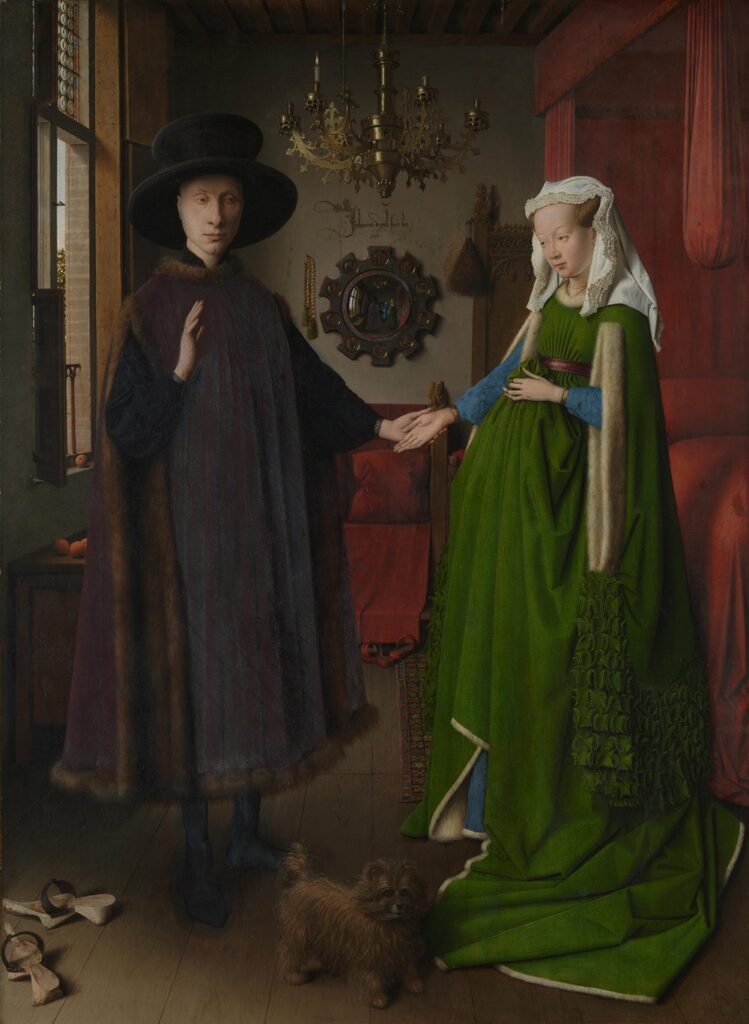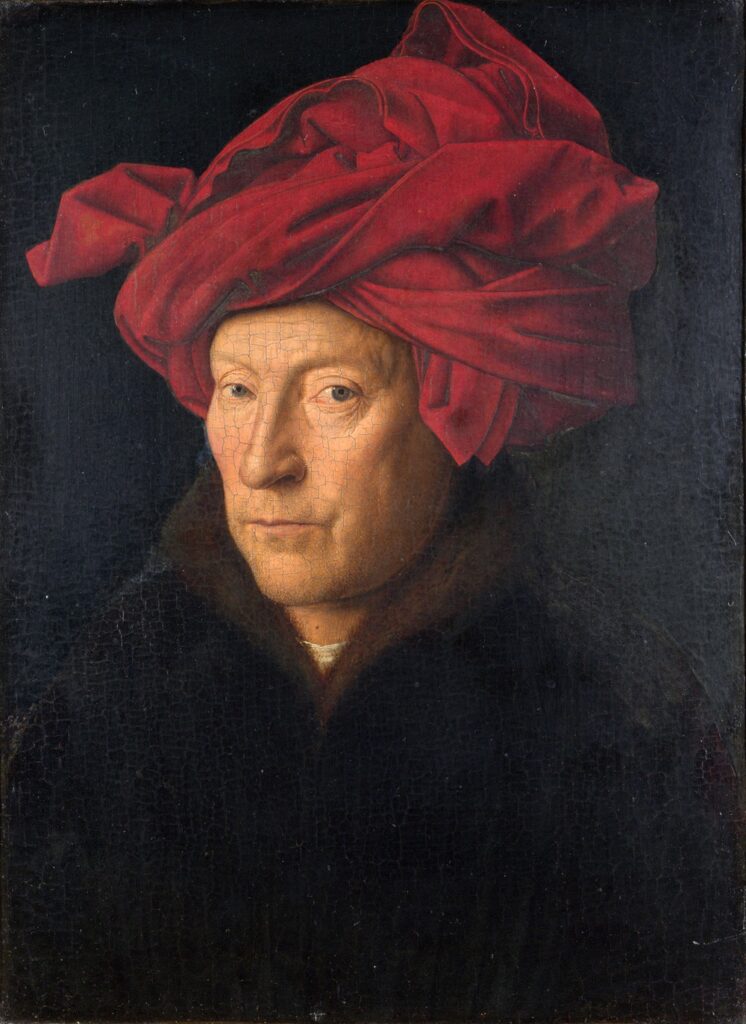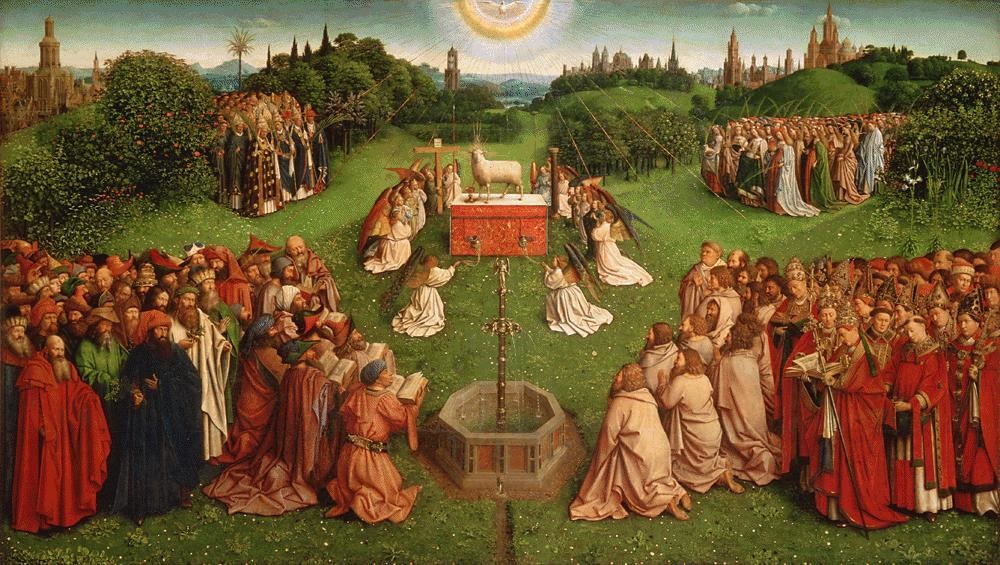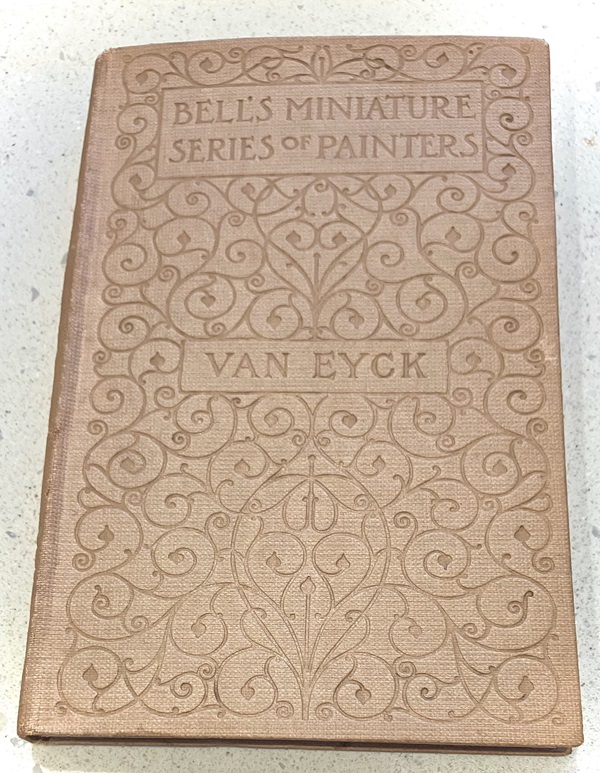As P.G. Konody notes in his 1907 book The Brothers van Eyck (Bell’s Miniature Series of Painters), very little is known about Hubert Van Eyck and much more about his brother Jan.
Jan, after all, was the artist of such masterpieces as The Arnolfini Portrait (1434, also known as The Arnolfini Wedding, The Arnolfini Marriage, and the Portrait of Giovanni Arnolfini and his Wife) and Portrait of a Man (1433, also known as Portrait of a Man in a Turban and Portrait of a Man in a Red Turban).


By contrast, when it comes to Hubert, the older of the two, “we have so little documentary evidence,” Konody writes, “that we have to fall back entirely upon conjecture and deduction.”
While Jan’s artworks are the jewels of many museums, Hubert has virtually nothing to his name.
The one exception is, nonetheless, a great work of art, The Adoration of the Mystic Lamb or The Ghent Altarpiece, started by Hubert in the mid-1420s in St. Bavo’s Cathedral in Ghent, Belgium. Jan completed the work in 1432, six years after his brother’s death.

“A deep gulf”
The two Netherlandish brothers, Konody writes, represent a major turning point in the history of art.
A deep gulf divides them from all their immediate precursors, who seem to belong altogether to a different epoch — nay, a different world.
Just as their improvement in the technical methods of their craft opened up a vista of till then unthought-of possibilities, so their conception of life and of pictorial form marks the beginning of a new era, the passing of the vague medieval idealism into an art that is based upon the close study and loving appreciation of Nature.
In terms of technical methods, the Van Eycks were identified for many centuries as the inventors of oil painting which, as Konody acknowledges, was an overstatement. In fact, oil painting in Europe dates back to the early 1100s. However, the brothers, he writes, “were the first successfully to mix the oil with the colors for painting.”
“The facts of Nature”
In terms of art, Konody argues that the Van Eycks, who collaborated on many works, brought to European painting a sculptural element unknown previously.
The real precursors of the van Eycks were the sculptors who carved the tombs, monuments, and reliefs in the churches of Tournai.
In these we first find the faithful adherence to the facts of Nature and the understanding of the subtleties of form which in painting appear first in the works of the brothers van Eyck…
The two masters
Even though many of Hubert’s works have not survived and much of Jan’s art is widely praised, both were highly regarded by contemporaries. Indeed, in some ways, Konody sees Hubert as the greater of the two.
He writes that Jan was a realist who never equaled the spirituality and decorative magnificence of his brother while Hubert was “the stylist and greater mind of the two.”
Based on the signed works of Jan and those parts of the Ghent altarpiece which are believed to be by Hubert, Konody characterizes the distinguishing qualities of the two masters:
Hubert far exceeds his brother in monumental impressiveness, in grandeur of style, in idealistic significance, in sumptuousness, and even in sense of beauty. Even the folds of his draperies have a fulness and a noble swing which form a striking contrast to the more labored irregularity of Jan’s…
Jan, on the other hand, excelled in stating the reality of the visible world. Generalizations of human types and landscape features were unknown to him. He was the first to fix upon his panels all the carefully studied and exquisitely wrought details of the actual world — sky and mountain and river, forest and fields, flowers and trees, and the churches and castles, houses and bridges, placed in Nature by human hands.
High praise and mystery
 But, when it comes to Jan’s importance, Konody doesn’t stop there.
But, when it comes to Jan’s importance, Konody doesn’t stop there.
Jan, he writes, could be named the first landscape painter and the first portrait painter in the modern sense of the word. When he means, he explains, is that Jan is
the first who could paint a scene so that it could be identified after the lapse of centuries, the first who could paint a portrait so that the model stands before us living and breathing.
It’s been more than a century since Konody wrote his book on the van Eycks, and not much has changed. Jan is still highly honored, and Hubert remains something of a mystery.
Indeed, the second sentence in Hubert’s Wikipedia entry is this:
The absence of any single work that he can clearly be said to have completed continues to make an assessment of his achievement highly uncertain, although for centuries he had the reputation of being an outstanding founding artist of Early Netherlandish painting.
Patrick T. Reardon
2.18.25
Written by : Patrick T. Reardon
For more than three decades Patrick T. Reardon was an urban affairs writer, a feature writer, a columnist, and an editor for the Chicago Tribune. In 2000 he was one of a team of 50 staff members who won a Pulitzer Prize for explanatory reporting. Now a freelance writer and poet, he has contributed chapters to several books and is the author of Faith Stripped to Its Essence. His website is https://patricktreardon.com/.

Enjoyed your review.